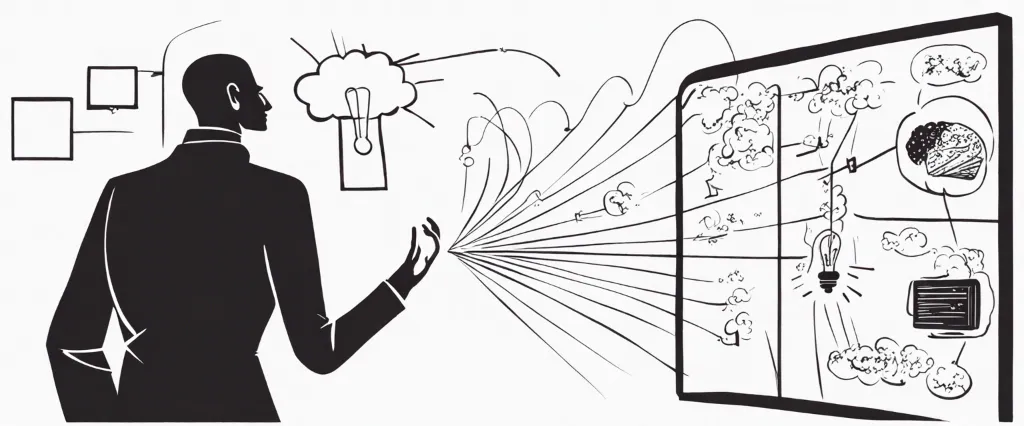
In his groundbreaking book, “Black Box Thinking: The Surprising Truth About Success,” Matthew Syed explores the power of learning from failure and adopting a growth mindset. Drawing inspiration from aviation, Syed highlights how the black box, a vital tool in investigating plane crashes, can be applied to various fields. Syed, a former professional table tennis player turned award-winning journalist and author, uses his own experiences and extensive research to unravel the mindset shifts necessary for individuals and organizations to thrive in an increasingly complex world. Through compelling anecdotes and thought-provoking analysis, Syed challenges conventional wisdom surrounding success, ultimately offering a refreshing perspective on how we can all achieve greatness by embracing failure as a crucial stepping stone towards improvement.
Chapter 1: The Power of Failure
Chapter 1 of “Black Box Thinking: The Surprising Truth About Success” by Matthew Syed is titled “The Power of Failure.” This chapter explores how failure can be harnessed as a catalyst for learning and growth, challenging society’s aversion towards making mistakes.
Syed begins by recounting the tragic story of Helle Crafts, a flight attendant whose murder at the hands of her pilot husband went unnoticed for a significant period of time. This incident serves as a metaphor for a systematic failure to learn from mistakes, a concept Syed calls “the black box.
Drawing on his experience as an Olympic table tennis player, Syed highlights the importance of accepting failure as an integral part of the learning process. He emphasizes the need for a culture that encourages individuals to embrace and learn from their mistakes rather than fearing and denying them. Syed demonstrates how industries like aviation have successfully adopted this approach through the implementation of black box flight recorders, which capture and analyze data from crashes to prevent similar incidents in the future.
The author introduces the concept of “intelligent failure” – deliberate experimentation that allows for learning and discovery – and contrasts it with “inept failure” – repeating the same mistakes without reflection. Syed argues that progress is hindered when people shy away from intelligent failure, as it stifles innovation, perpetuates broken systems, and obstructs personal and professional growth.
In this chapter, Syed sets the stage for the broader exploration of failure throughout the book. He urges readers to confront their biases and fears regarding failure and embrace its potential for improvement and success. By presenting vivid examples and thought-provoking analysis, Syed challenges the reader’s mindset and encourages a shift towards a more open and productive relationship with failure.
Chapter 2: Learning from Aviation
Chapter 2 of “Black Box Thinking” by Matthew Syed, titled “Learning from Aviation,” explores the philosophy and practices that have made the aviation industry one of the safest and most efficient in the world. Syed compares this industry’s approach to learning from mistakes and the consequences of failure with other sectors, emphasizing the importance of adopting a similar mindset.
The author begins by narrating the story of the British aviation pioneer, Geoffrey de Havilland, who faced a major setback when one of his planes, the Comet, experienced repeated crashes due to structural issues. De Havilland’s response was not to shy away but to pioneer an open culture of learning from mistakes, leading to the Comet’s eventual success. Syed argues that the aviation industry has evolved to embrace a “black box thinking” mentality, recognizing the crucial importance of analyzing failures and near-misses.
Syed further explores the “just culture” within aviation, in which individuals are encouraged to report their mistakes without fear of retribution. This leads to a wealth of data that can be used to investigate incidents in depth and uncover systemic issues. These findings are then disseminated throughout the industry, enabling others to learn and improve from them. The concept of learning is deeply ingrained in aviation through comprehensive post-mortem reviews, technical investigations, and simulator training.
The chapter also highlights the importance of human factors in aviation incidents. Syed explains how the industry recognizes that humans are fallible, and therefore incorporates meticulous training programs that focus on building a culture of questioning, fostering communication, and developing shared mental models.
In conclusion, Chapter 2 emphasizes the aviation industry’s relentless pursuit of learning, embracing failures, and adopting a proactive approach to error analysis. Syed argues that other industries, such as healthcare and criminal justice, can benefit from adopting this mindset, acknowledging that learning from mistakes is crucial for progress and improvement.
Chapter 3: The Healthcare Challenge
Chapter 3 of “Black Box Thinking” by Matthew Syed explores the challenges faced by the healthcare industry. Syed argues that the industry often fails to learn from its mistakes and lacks the culture of openness and learning found in other high-risk industries.
The chapter begins by examining the case of detective policing in the UK. Unlike the healthcare sector, which tends to focus on individual blame when errors occur, the police force has embraced a system of open investigation and continuous learning. Syed emphasizes the importance of this approach, as it allows for an understanding of systemic failures rather than simply blaming individuals.
The author then delves into the complexity of healthcare, where errors can have serious and sometimes fatal consequences. Despite advancements in medical science, mistakes are still made due to a range of factors including human error, miscommunication, and systemic failures. However, Syed highlights that the industry often tries to cover up these errors, leading to a lack of learning and improvement.
Syed examines the aviation industry as a contrasting example, where a culture of open reporting and investigation of incidents has led to significant improvements in safety and learning. He argues that it is essential for healthcare to adopt similar practices to tackle the challenges it faces.
To bring about this change, the chapter explores the concept of a “black box” in healthcare, similar to those used in aviation. By recording data from medical procedures, including surgeries and treatments, healthcare professionals can learn from errors and identify areas for improvement. Syed acknowledges the potential concerns about privacy but argues that the benefits of creating a learning culture outweigh these challenges.
In conclusion, Chapter 3 highlights the need for the healthcare industry to embrace a culture of openness and learning from mistakes. By adopting practices similar to those utilized in high-risk industries like aviation, healthcare can improve patient safety and outcomes. The introduction of “black boxes” could provide valuable data to drive continuous improvement in the industry.
Chapter 4: The Importance of Feedback

Chapter 4: The Importance of Feedback in the book “Black Box Thinking” by Matthew Syed explores how feedback plays a crucial role in improving performance across various domains.
Syed begins by highlighting the infamous Challenger disaster, where NASA engineers failed to listen to critical feedback. This serves as a cautionary tale, demonstrating the disastrous consequences that can arise from ignoring feedback. He emphasizes that feedback is not only valuable in ensuring safety, but also for driving progress and innovation.
To illustrate the importance of feedback, Syed presents the story of how the aviation industry revolutionized flight safety. By creating a culture of learning from mistakes through the implementation of black box recorders, the industry was able to identify critical errors and take corrective action. Syed argues that if feedback had been utilized in other industries, similar breakthroughs could have been achieved.
The author then moves on to discuss the concepts of “closed” and “open” feedback loops. A closed feedback loop refers to an environment where information is not shared and mistakes are covered up, hindering progress. In contrast, an open feedback loop encourages transparency and fosters an environment where errors and weaknesses can be identified and corrected. Such an approach facilitates constant learning, leading to continuous improvement.
Syed explores how healthcare organizations have traditionally had closed feedback loops, resulting in avoidable medical errors. He suggests that by embracing open feedback, as seen in industries like aviation, healthcare can significantly reduce errors and enhance patient safety.
Additionally, the chapter demonstrates how feedback is crucial for personal and professional growth. Syed presents studies showing the link between honest feedback and improved performance, asserting that it is the responsibility of leaders and organizations to create an environment conducive to open feedback.
In summary, Chapter 4 highlights the transformative power of feedback. By valuing and embracing feedback, industries can learn from mistakes, drive innovation, enhance safety, and improve individual and organizational performance.
Chapter 5: Creating a Culture of Learning
Chapter 5 of “Black Box Thinking” by Matthew Syed focuses on the concept of creating a culture of learning. Syed explores how embracing failure and learning from mistakes can lead to innovation and improvement across various domains.
The chapter begins by highlighting the significance of a growth mindset, wherein individuals believe that intelligence and skill can be developed through effort and learning, rather than seeing them as fixed attributes. Syed emphasizes that this mindset is crucial for fostering a culture of learning, as it encourages individuals and organizations to proactively seek out feedback, analyze mistakes, and continuously improve.
Syed delves into the aviation industry to exemplify the benefits of cultivating a learning culture. He explains how the introduction of flight data recorders, commonly known as black boxes, revolutionized the industry by providing essential information about accidents and near misses. This data became instrumental in identifying patterns, improving systems, and preventing future disasters.
The author also explores medical errors and healthcare practices, emphasizing that a culture of learning is vitally important in this field as well. Syed highlights the case of Dr. Fred Epstein, who transformed the treatment of pediatric brain tumors by encouraging a transparent and honest approach towards mistakes, actively learning from them, and implementing changes in protocols.
Furthermore, the chapter discusses the role of wealth inequality in hindering a culture of learning. Syed argues that individuals from less privileged backgrounds often lack the resources and opportunities necessary to learn from their mistakes and improve their circumstances, perpetuating a cycle of failure.
In conclusion, Chapter 5 of “Black Box Thinking” underscores the importance of embracing failure and creating a culture of learning. By adopting a growth mindset, organizations and individuals are encouraged to analyze mistakes, seek feedback, and make necessary improvements. This approach, as illustrated in aviation and healthcare, leads to innovation, prevention of future errors, and positive change across various sectors.
Chapter 6: Embracing Complexity
Chapter 6: Embracing Complexity of the book “Black Box Thinking” by Matthew Syed introduces the concept of complexity and its role in learning from failure. Syed emphasizes that when it comes to complex systems, the linear cause-and-effect thinking that humans naturally resort to often fails to provide accurate explanations for failures.
Syed begins by discussing the aviation industry and how it demonstrates a commitment to embracing complexity. He explains how airplanes have black boxes that record vast amounts of data, enabling investigators to thoroughly analyze accidents or malfunctions and identify the root causes of failures. This leads to continuous improvements in aircraft design, procedures, and pilot training. In contrast, Syed highlights how healthcare, education, and many other industries lack such rigorous systems for learning from mistakes.
The author explores the concept of “causal density” to explain why complex systems often defy simple explanations. Causal density refers to the interconnected nature of different factors contributing to an outcome. Syed asserts that the complexity of a problem is often inversely proportional to the accuracy of explanations provided by experts. This is why diverse teams, incorporating multiple perspectives, are more likely to uncover valuable insights.
Syed provides examples from various fields, such as healthcare, military operations, and Formula One racing, to illustrate the importance of embracing complexity and the potential consequences of oversimplified explanations. He argues that by acknowledging the complexity inherent in our systems, we can nurture a culture of continuous improvement and learn from failures more effectively.
In conclusion, Chapter 6 of “Black Box Thinking” emphasizes the need to move away from simplistic thinking when analyzing failures and embrace the complexity of the systems in which they occur. By understanding the interconnectedness of various factors, organizations can develop innovative solutions and prevent future failures.
Chapter 7: Reducing Error in Business
Chapter 7 of the book “Black Box Thinking” by Matthew Syed focuses on reducing error in businesses. Syed emphasizes that errors are not necessarily negative but can be valuable opportunities for growth and improvement. He argues that the fear of failure often prevents businesses from learning from their mistakes and inhibits progress.
The chapter begins by discussing how the healthcare sector can learn from the aviation industry, which has significantly reduced the occurrence of errors through rigorous examination and investigation. Syed argues that businesses should adopt a similar approach, encouraging a culture of transparency and accountability to identify and rectify errors in a constructive way.
Syed suggests that businesses should adopt a systems-based approach to error reduction, focusing on the processes and systems rather than just blaming individuals. By analyzing errors as a result of flawed systems, companies can make necessary improvements and prevent future mistakes. He provides examples of industries such as nuclear energy and aviation, which have successfully implemented this approach to substantially reduce error rates.
The author also emphasizes the importance of developing an open and learning-oriented culture within organizations. This involves creating an environment where employees are encouraged to report mistakes, share their experiences, and learn from each other. Syed believes that this collaborative approach fosters innovation and creativity, ultimately leading to better outcomes.
In conclusion, Chapter 7 of “Black Box Thinking” highlights the significance of reducing error in the business world. Syed suggests that businesses should adopt a systems-based approach, promote a culture of openness and learning, and view errors as opportunities for improvement. By embracing these principles, companies can enhance their performance, drive innovation, and achieve long-term success.

Chapter 8: Applying Black Box Thinking to Society
Chapter 8 of the book “Black Box Thinking” by Matthew Syed delves into the application of the black box thinking concept to society. The author urges readers to adopt a more systemic and constructive approach to solving societal problems by encouraging a culture of learning from mistakes.
Syed begins by highlighting the need to challenge the culture of blame in society. He argues that rather than pointing fingers or seeking scapegoats, we should focus on finding the root causes of problems. By adopting a more objective and empathetic approach, we can create an environment where individuals and organizations feel safe to admit their mistakes and seek improvement.
The chapter also emphasizes the role of technology and data in driving positive change. Syed points to examples such as the use of data-driven approaches to understand crime patterns and reduce gun violence in cities like Chicago. By analyzing large amounts of data, authorities were able to identify specific areas and times where crime rates were highest, enabling them to direct resources effectively.
Another aspect the author explores is the importance of feedback loops in society. By collecting and analyzing feedback from various sources, such as customers or citizens, organizations and governments can identify areas for improvement and make necessary changes. The NHS (National Health Service) in the UK provides a prime example of how feedback systems can be implemented to improve patient care and prevent medical errors.
Overall, Chapter 8 highlights the need for society to embrace a more proactive and adaptive approach to problem-solving. By focusing on learning from mistakes and utilizing data and feedback, we increase our chances of finding innovative solutions to complex problems and ultimately create a more resilient and effective society.
After Reading
In conclusion, “Black Box Thinking” by Matthew Syed is a thought-provoking and insightful book that explores the importance of learning from failure in order to achieve success. Syed emphasizes the need for a culture of openness and accountability, both individually and within organizations, to promote continuous improvement and innovation. By drawing parallels between industries such as aviation and healthcare, the author highlights the power of admitting mistakes, analyzing them, and implementing the necessary changes to prevent recurrence. Ultimately, “Black Box Thinking” challenges our fear of failure and encourages us to embrace it as a vital step towards personal and professional growth.
1. Atomic Habits: An Easy & Proven Way to Build Good Habits & Break Bad Ones” by James Clear – This transformative book provides practical strategies for creating and maintaining positive habits that can lead to personal and professional success. Clear’s insights and actionable advice make it a must-read for anyone looking to make lasting changes in their lives.
2. Sapiens: A Brief History of Humankind” by Yuval Noah Harari – This captivating book takes readers on a thought-provoking journey through the history of the human species. Harari explores our biological, cultural, and cognitive development, ultimately questioning what sets us apart and what the future may hold. It’s a fascinating and enlightening read for those interested in understanding how we got to where we are today.
3. Educated: A Memoir” by Tara Westover – This gripping memoir recounts the author’s journey from a childhood in a strict and abusive household to her pursuit of education and intellectual enlightenment. Westover’s resilience, determination, and triumph over adversity make this memoir a powerful and inspiring reflection on the transformative power of education.
4. Thinking, Fast and Slow” by Daniel Kahneman – Nobel laureate Kahneman explores the intricacies of human thought processes, delving into how we make decisions and judgments. By examining the interplay between our intuitive “fast” thinking and our deliberate “slow” thinking, Kahneman provides valuable insights into the biases and errors that can influence our choices. This book is a fascinating and essential read for anyone interested in understanding the complexities of human cognition.
5. Born a Crime: Stories from a South African Childhood” by Trevor Noah – Comedian and host of “The Daily Show,” Trevor Noah, shares his powerful and often humorous memoir of growing up in South Africa during the tumultuous final years of apartheid. Noah’s wit, intelligence, and resilience shine through as he sheds light on racial identity, family dynamics, and the social and political challenges of his upbringing. This memoir offers a unique perspective on a critical period in history while celebrating the strength of the human spirit.



